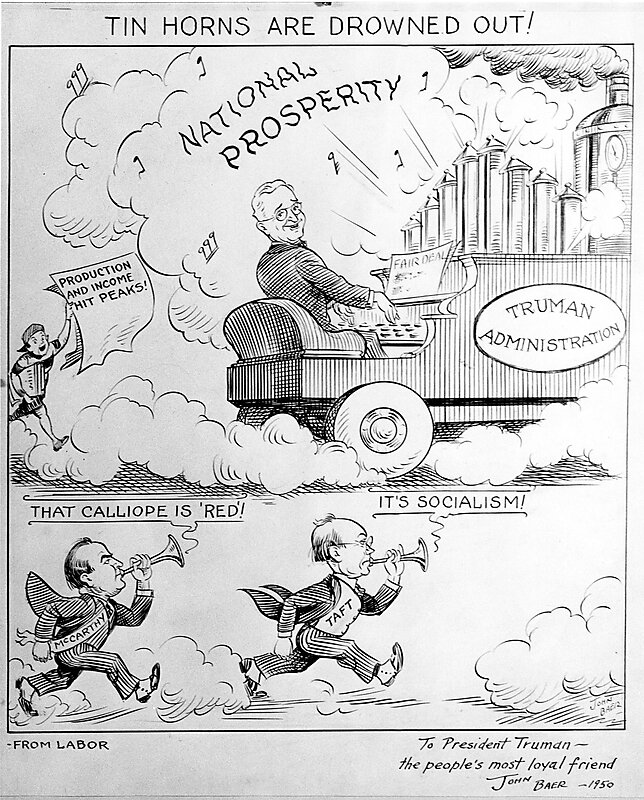Incoming leadership of the House Oversight Committee plans to investigate waste, fraud, abuse and mismanagement of COVID relief funds, including the $350 billion provided to state and local governments as part of President Biden’s American Rescue Plan (ARPA). In retrospect, this expenditure looks like a serious error: state and local governments did not need the money, and, by spending it, they appear to have exacerbated the recent outbreak of inflation.
But at a recent Volcker Alliance Special Briefing, municipal finance experts defended the spending. To avoid future unnecessary bailouts, it is important for small government advocates to come to grips with the arguments they made.
Speakers offered two main defenses: (1) we could not have expected such a sharp rebound in state and local revenues, and (2) it was important to avoid the Obama-era “mistake” of providing insufficient stimulus which reputedly caused a weak rebound from the Great Recession.
In the runup to ARPA’s passage, a high-profile economic forecaster overestimated state and local government revenue losses. Moody’s Analytics, which had initially projected a $500 billion budgetary hit, was still forecasting $220 billion of red ink as of February 19, 2021.
But Cato’s Chris Edwards provided overwhelming evidence that state and local revenues were holding up. Looking back at what we knew in early 2021:
- The COVID-19 recession had already bottomed out
- High income workers were maintaining their jobs and taxpaying ability by working from home
- Calendar Year 2020 state revenues were almost identical to 2019 levels
So, there was a lot of reason to doubt the most pessimistic forecasts, but there was a lack of mechanisms for including that knowledge into the policymaking process. Having been repeatedly cited by Joe Biden as a candidate and as president, Moody’s Analytics estimates appear to have had outsize influence on administration and Congressional leadership.
In a future downturn, representatives should ask the Congressional Budget Office or Congressional Research Service to conduct their own analysis, hopefully insulated from commercial considerations.
But, regardless of how much states and cities were likely to lose, some argue that the federal government should have “gone big” anyway. The cautionary tale for them was the Obama Administration’s decision to seek “only” $819 billion of fiscal stimulus when it took the reins in 2009.
Analogies between Obama’s American Rescue and Recovery Plan (ARRA) and Biden’s ARPA are challenged by the differences in circumstances. Obama’s ARRA passed when the economy was still in the Great Recession, but by the time Biden’s ARPA became law, the economy had already been growing for ten months. Further, ARPA was preceded by much more stimulus than its earlier counterpart. In 2020, the previous Congress had passed three large COVID rescue packages containing a total of $3.4 trillion in new spending.
But differences in circumstances aside, the assertion that ARRA was underpowered requires more examination. While spending money we do not have can improve GDP figures in the very short term, it is less clear that the effect lasts beyond the quarter in which the money is spent.
Theoretically, a portion of stimulus money is invested in infrastructure projects that enhance productivity in the intermediate to long-term. This effect could improve economic growth over many years, but only if the money is spent on value added projects. Unfortunately, a lot of ARRA spending has yet to yield dividends, over a decade after it was committed. Billions were spent on California High Speed Rail and the Honolulu Authority for Rapid Transit. But, as of the end of 2022, neither system was in operation. Once they begin service, they are likely to carry far fewer passengers than originally projected.
Stimulus advocates also argue that more government spending ripples through the economy creating more jobs in the process. But it is also possible that newly created reserves used to fund deficit spending will find their way into asset markets, pumping up valuations. In the ten years after the Great Recession ended, the S&P 500 stock price index tripled.
During this period, there was a large volume of federal stimulus. Each year, the federal government ran deficits ranging from $440 billion to $1.3 trillion, and the M2 money supply grew by 73 percent. So, the problem was not lack of stimulus; it was just that this stimulus did not reliably find its way into the broader economy. Instead, it pumped up asset prices, mostly benefiting wealthy investors.
The idea that every downturn must be met with a torrent of federal spending and money creation is an increasingly dangerous one. As federal debt grows relative to the size of the economy, policymakers are being forced to choose between two undesirable alternatives: devote a large portion of the federal budget to debt service or suppress interest rates, thereby spiking inflation.
Sending funds to state and local governments that they do not need and are unlikely to spend efficiently is not a recipe for long-term economic growth. And such stimulus spending is inflationary, regardless of whether that inflation impacts asset prices or the cost of consumer goods and services.




